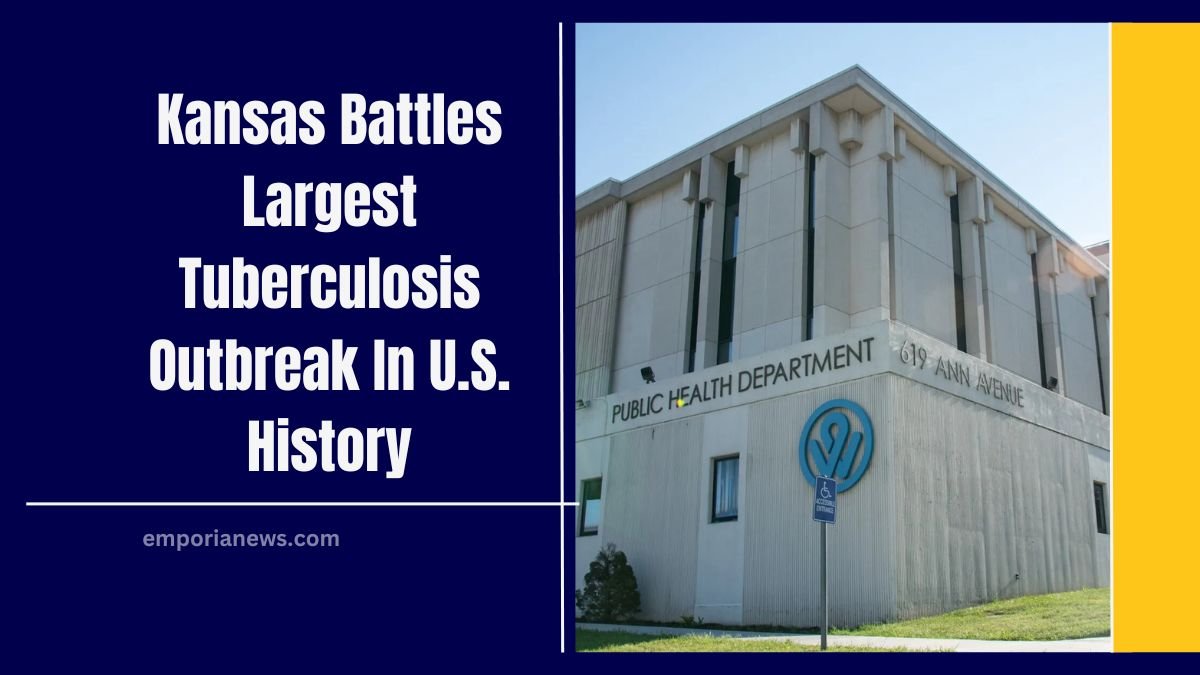The state of Kansas is currently grappling with the largest documented tuberculosis (TB) outbreak in U.S. history, according to the Kansas Department of Health and Environment (KDHE).
The outbreak, primarily centered in the Kansas City Metro Area, has raised significant health concerns, with active and latent cases reported across multiple counties.
Here’s a detailed overview of the outbreak, its impact, and measures to prevent further spread.
Overview of the Outbreak
The outbreak began in January 2024 and has since become the largest of its kind in the country. The affected areas include Wyandotte County and Johnson County, with 67 active cases and 79 latent cases reported to date.
While TB is often thought of as an ancient disease, it remains a serious public health issue. The Sedgwick County Health Department has also reported 14 active cases over the past year, slightly higher than their annual average of 10-12 cases.
Key Data on the Kansas TB Outbreak
| Category | Details |
|---|---|
| Location | Wyandotte County, Johnson County, Sedgwick County |
| Active Cases | 67 |
| Latent Cases | 79 |
| Total Cases in Sedgwick County | 14 (2024) |
| Initial Report | January 2024 |
| Transmission Risk | Low but preventable |
What is Tuberculosis (TB)?
Tuberculosis is a bacterial infection caused by Mycobacterium tuberculosis. It primarily affects the lungs but can spread to other parts of the body, including the brain, spine, and kidneys. TB is spread through the air when an infected person coughs, sneezes, or speaks.
There are two main types of TB:
- Active TB: The disease is contagious and presents with symptoms such as persistent cough, fever, fatigue, and weight loss.
- Latent TB: The bacteria remain dormant in the body without causing symptoms and are not contagious. However, latent TB can become active if untreated.
Why is the Kansas Outbreak Significant?
This outbreak is particularly concerning due to the scale and geographic spread of cases:
- Largest in U.S. History: With 67 active cases and 79 latent cases, the numbers surpass previous outbreaks.
- Containment Challenges: While primarily centered in Northeastern Kansas, Sedgwick County has also seen an increase in cases, raising concerns about potential spread.
- Public Perception: Many people mistakenly believe TB is an outdated disease. Health officials stress that while TB is rare in the U.S., it remains deadly in other parts of the world, making prevention and early diagnosis critical.
Symptoms of Tuberculosis
Health officials are urging Kansans to stay vigilant and seek medical advice if they experience the following symptoms:
- Persistent cough lasting more than 3 weeks.
- Fever or chills.
- Unexplained weight loss.
- Fatigue and body aches.
- Night sweats.
Prevention Measures
The Sedgwick County Health Department emphasizes that while the risk of transmission is low, simple measures can significantly reduce the spread of TB:
- Cover Your Cough: Use a tissue or your elbow to cover your mouth and nose when coughing or sneezing.
- Seek Medical Attention: If you experience symptoms, consult a doctor immediately for testing and diagnosis.
- Early Treatment: Early intervention with antibiotics can effectively treat active TB and prevent complications.
- Vaccination: While the BCG vaccine is not widely used in the U.S., it is effective in preventing severe forms of TB in children in high-risk areas.
Impact on the General Public
Despite the scale of the outbreak, the KDHE assures residents that the risk to the general public remains low due to effective prevention and diagnostic measures in place.
Health officials are working closely with local health departments to contain the outbreak and educate the public about the importance of timely diagnosis and treatment.
The ongoing tuberculosis outbreak in Kansas highlights the importance of vigilance and proactive public health measures.
With 67 active cases and 79 latent cases, this is the largest documented TB outbreak in U.S. history, underscoring the need for early diagnosis, prevention, and treatment.
While the risk to the general public remains low, Kansans are encouraged to stay informed, take preventative measures, and seek medical attention if symptoms arise.
With coordinated efforts between state and local health departments, the outbreak can be effectively managed, ensuring the safety and well-being of all residents.
Stay aware, stay informed, and take action to protect yourself and your community from tuberculosis.




